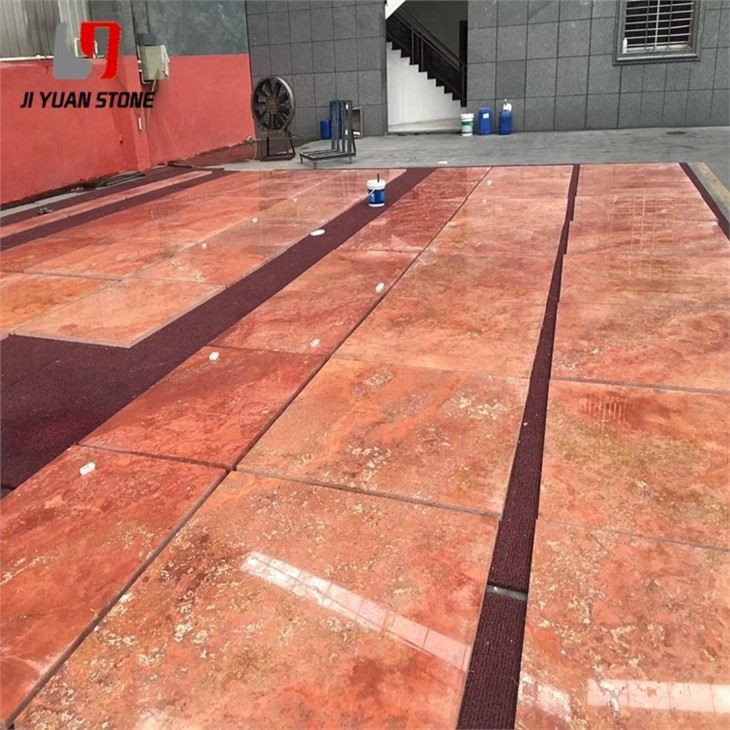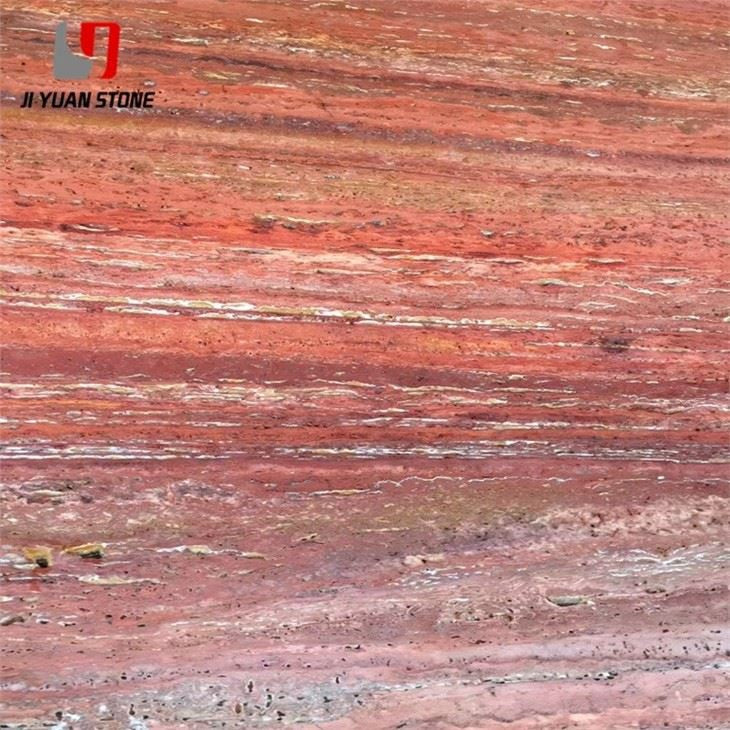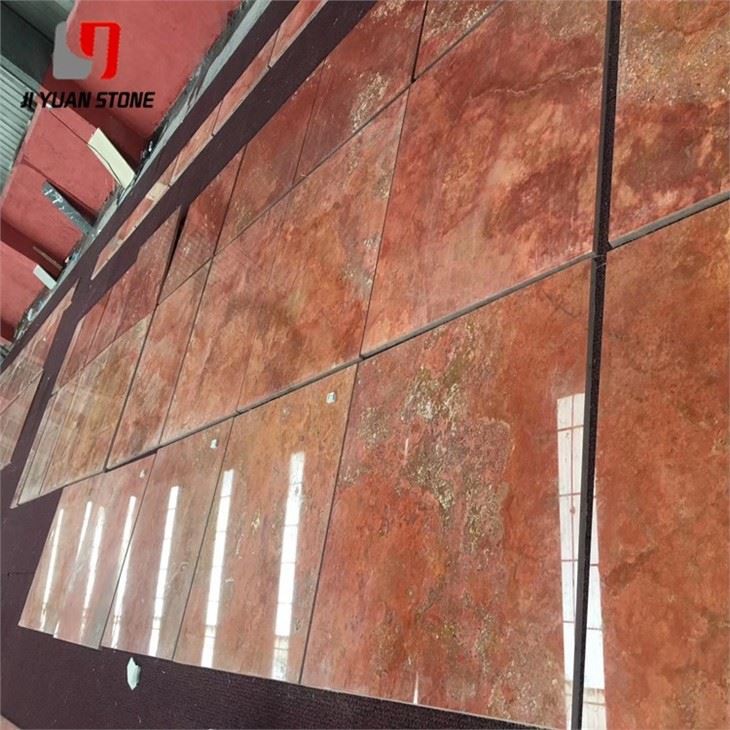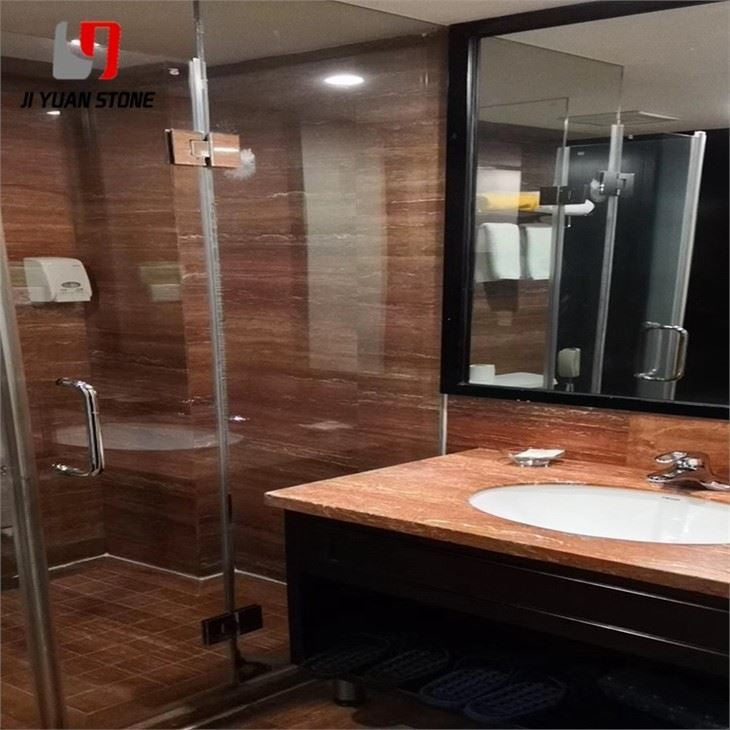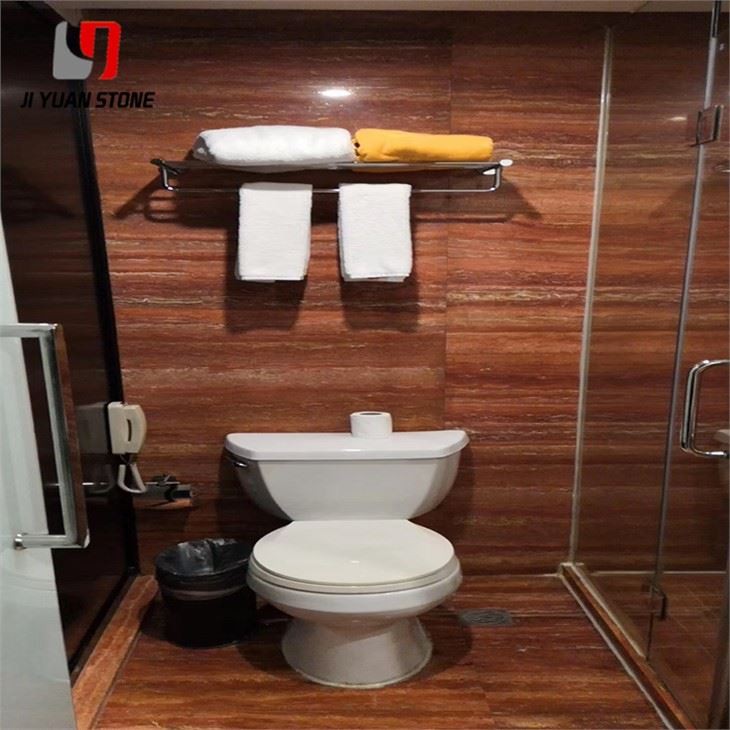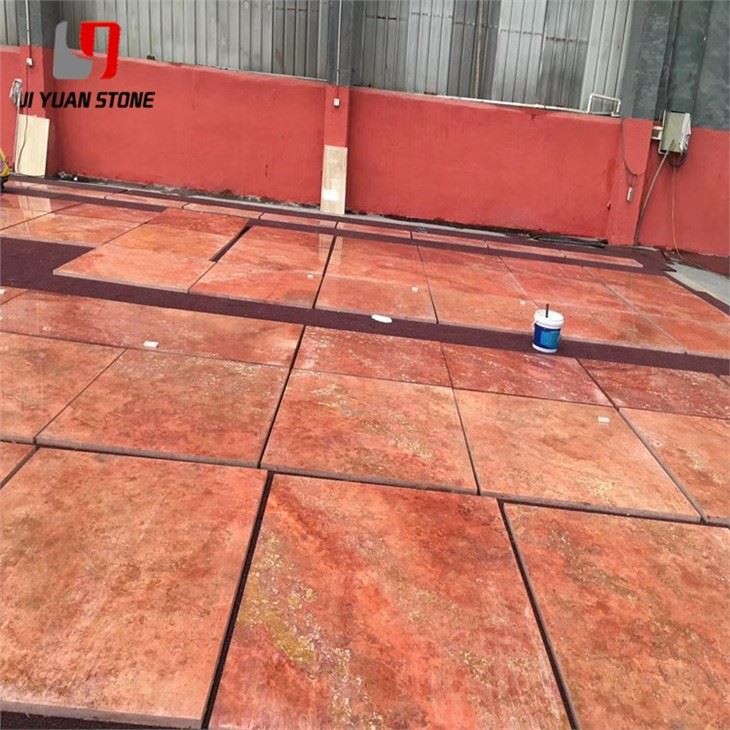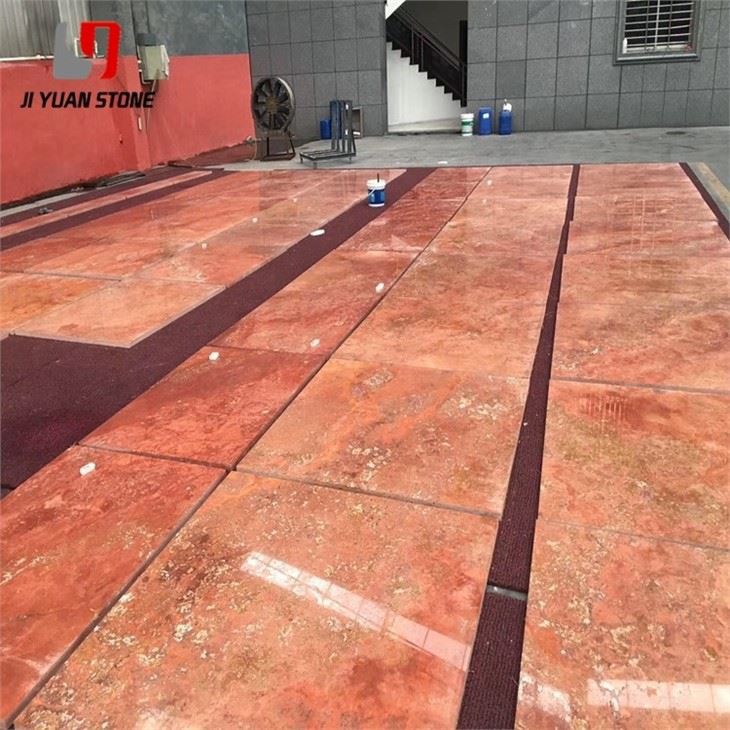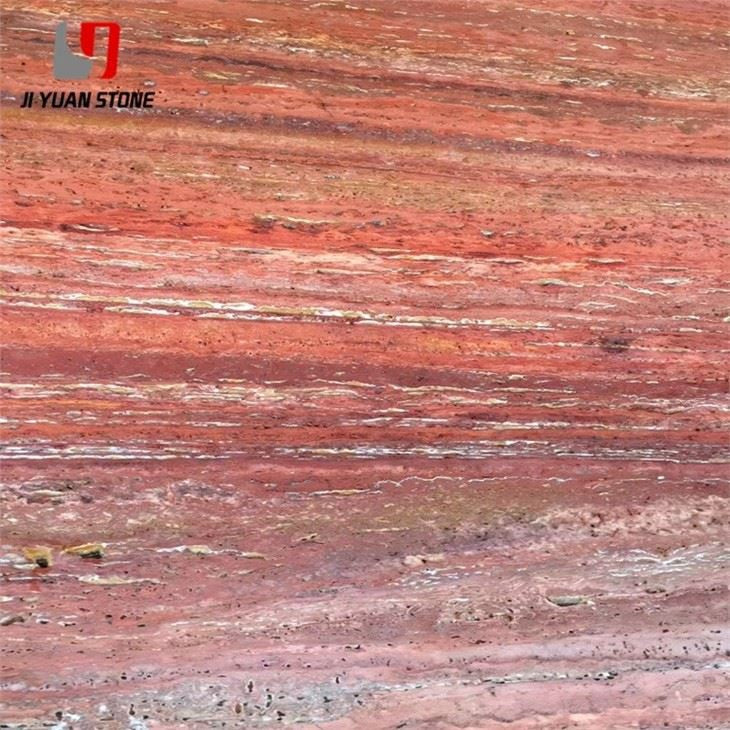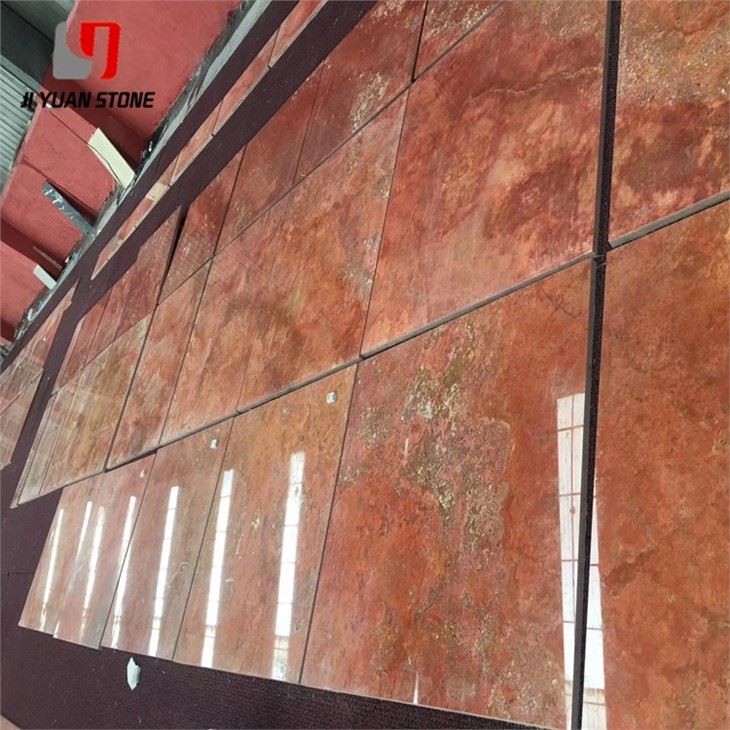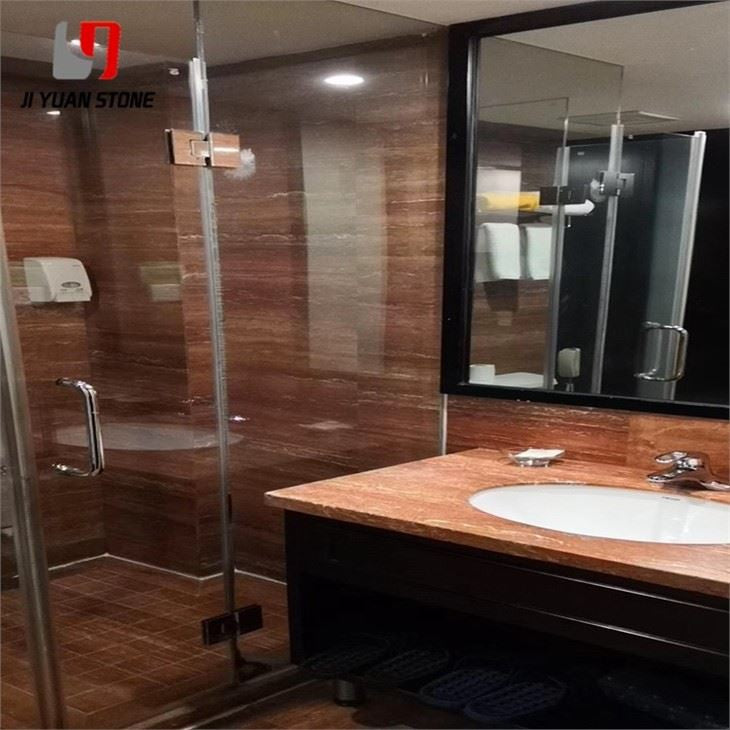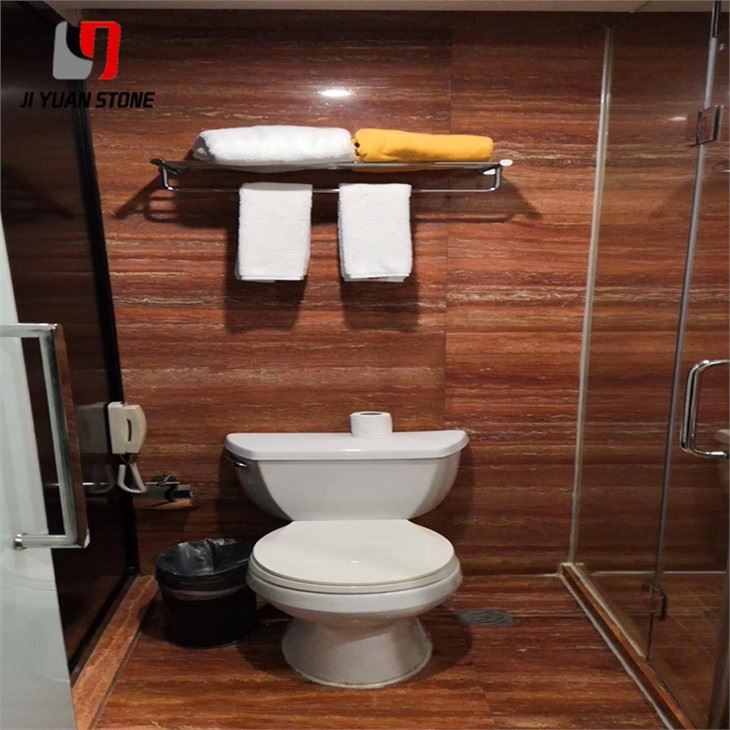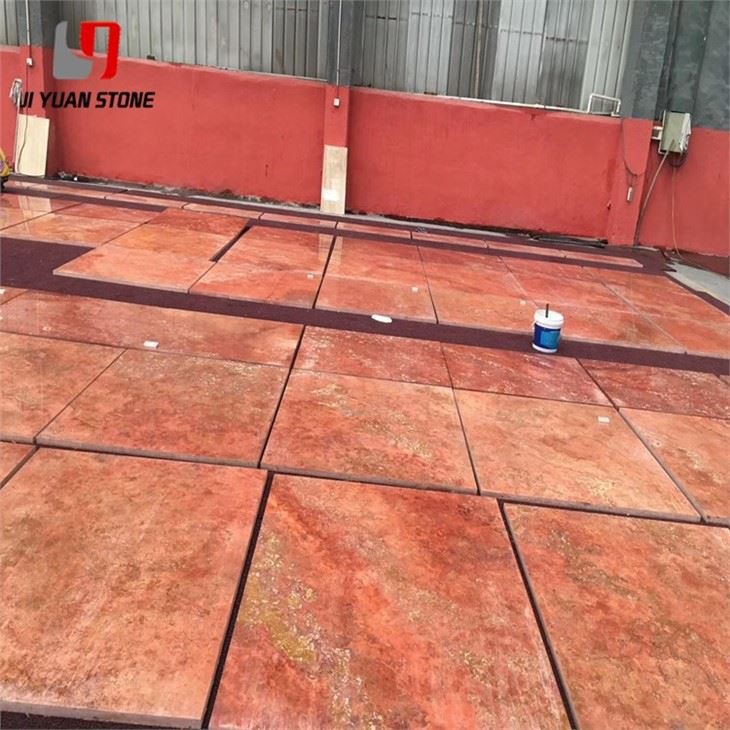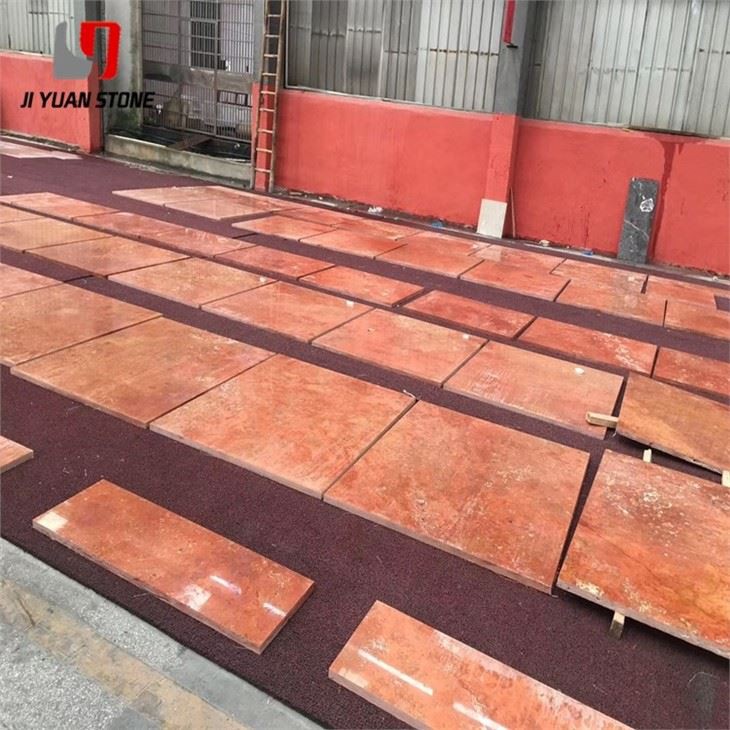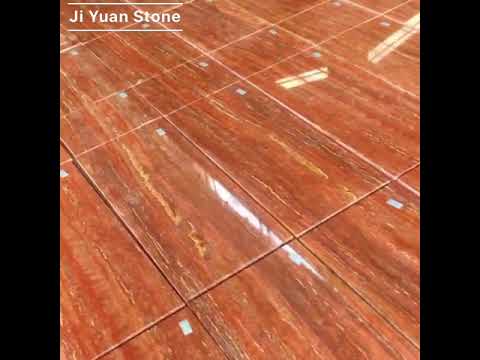Red Travertine Marble
Red Travertine Marble
Red Travertine Marble: A Bold, Textured Natural Stone with Timeless Appeal
Introduce a touch of luxury to your space with Red Travertine Marble. Its unique red veining adds a bold and elegant flair to any room. Made from natural stone, this durable and timelessly beautiful marble is a perfect choice for countertops, flooring, or accent walls. Enjoy the benefits of a high-end look without sacrificing durability.
| Feature | Details |
|---|---|
| Popular Size: |
|
| Tile: |
1) 305 x 305 x 10mm or 12" x 12" x 3/8" 2) 406 x 406 x 10mm or 16" x 16" x 3/8" 3) 457 x 457 x 10mm or 18" x 18" x 3/8" 4) 300 x 600 x 20mm or 12" x 24" x 3/4" 5) 600 x 600 x 20mm or 24" x 24" x 3/4" ect custom sizes. |
| Quality details: |
1) Polished degree: 95 degree or up. 2) Thickness tolerance: +/-0.5mm. 3) Diagonal tolerance : +/-1mm. 4) Surface flatness tolerance: +/-0.3mm. 5) Adjacent edge verticality tolerance: +/-0.5mm, Precise Cutting by infrared-ray-cut machine. |
| Surface Finish: | Honed |
| Edgeing: | Full Bullnose,Half bullnose,Flat eased (eased edge),Bevel top,Radius Top,Laminated Countertop,Ogee Edge,DuPont,Edge,Beveled or others. |
| Usage: | For internal & external decoration and construction,Walling or flooring tile, or slab, top or kitchen countertops are available. |
| Payment: | T/T 30% Deposite |
| Package: | Cut-to-size:fumigation wooden crates;Slab:fumigation wooden bundles. |
Red travertine marble has seen a significant rise in popularity over the years, especially among Chinese designers and homeowners. When I was working at a large stone company in Shenzhen, red travertine marble projects flooded the market for nearly two years. From the south to the north of China, it was the centerpiece of countless design trends. However, with this widespread adoption came widespread misuse. Due to limited understanding of travertine’s physical properties, it was often used inappropriately—leading to poor results and expensive repairs.
Despite its stunning appearance, red travertine marble has two critical weaknesses:
1 . Surface Porosity – The natural holes in the stone can affect its decorative quality.
2 . Low Structural Strength – Red travertine lacks the strength required for many architectural applications.
Understanding these issues requires some basic knowledge of what red travertine marble is.
What is Red Travertine Marble?
Travertine is a form of limestone formed by mineral springs, especially hot springs. It is characterized by its porous surface created by trapped gas during the sedimentation of calcium carbonate. The scientific classification of travertine is tuff or travertine, but in commercial terms, it’s often grouped under marble due to its polishable surface.
Travertine deposits vary in color—white, beige, yellow, and red being the most common. Red travertine marble forms when iron-rich minerals contribute to its vibrant hue. Most travertine is formed rapidly in freshwater environments (rivers, lakes, ponds), which results in its distinctive patterns and pores. This quick formation often traps gases, resulting in cavities that give the stone its unique visual texture—but also its mechanical weaknesses.
Travertine’s Physical Properties:
- Texture Direction Matters: The bending strength is anisotropic. In the strong direction (perpendicular to the vein), strength ranges from 6MPa to 7MPa; in the weak direction (parallel to the vein), it may fall as low as 1MPa.
- Low Unit Density: Makes it great for wall coverings or feature panels, but not for structural or load-bearing applications.
Types and Origins:
Famous varieties include Roman, Iranian, and Turkish travertines. Roman travertine is premium quality, darker, and has a richer texture. Red travertine marble can be found in shades of green, white, purple, silver gray, brown, golden yellow, and more. Even Henan in China produces unique travertine from its caves.
In conclusion, while red travertine marble offers unmatched natural beauty and visual depth, it should be used carefully. It’s best suited for indoor decorative use where strength demands are minimal. Mismatched usage, as seen in past Chinese trends, led to poor project outcomes and restoration costs. When used wisely, however, red travertine marble can create luxurious, elegant spaces that stand the test of time.
Share
